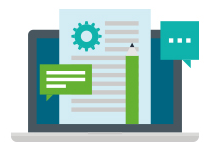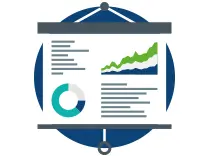
When it comes to reaching customers, meeting their needs, and solving their problems, technology today can do almost anything that even the most imaginative customer experience executive could want.
In the real world, however, there are budgets, customers, culture, and staff to act as a drag on our lofty ambitions.
Over ten years after the Global Financial Crisis, most companies are still mindful of making large investments, and so legacy systems which cannot be replaced must be wrung for the last drop of value. While customers’ expectations are higher than ever, they are still putting up with poor service from the likes of utilities and telcos. Front line staff also find it difficult to adapt to the multi-skilled nature of their new work and cope with digital information overload.
The truth is that – two decades into the digital revolution – for most important interactions, most people still pick up the phone and call the company. While consumers have taken to social media, facetime and other new communication technologies in their personal lives, they are currently not able to interact with most companies using these tools.
This means there exists an opportunity for any company looking to go beyond the basics to gain a leap on its competition. Below are some of the practical steps that companies can take right now to steal a march.
Forget chatbots, let AI loose on your data
Machine learning is the AI technology behind advanced analytics that seeks to derive commercial insight from the huge sets of data now routinely handled by contact centres.
Analytics can give companies valuable information about customer and product cycles, and pinpoint service issues before they arise, so proactive steps can be taken. At the level of individual customers engagement, analytics and speech analytics can help predict customer behaviour and define personalised solutions and offers that boost loyalty and satisfaction.
The other main use for AI that contact centre and customer experience executives should be looking at is the automation of routine and laborious tasks. Robotic Process Automation (RPA) encompasses a whole range of AI technologies that can automate back office processes like data capture, writing and sending emails, running reports, processing orders and payments, and managing case files.
Tag and collate data to deliver omnichannel
The real key to unlocking all the benefits of the digital customer experience revolution is that everything must appear seamless from the customer’s point of view. In a multichannel or omni-channel environment this means that when a customer switches channels, they shouldn’t have to repeat themselves or be transferred between departments.
The ability to take a process – generating a custom quote for example – which must run through numerous customer-facing, back office, and partner integrated systems and have it run seamlessly, is not just a benefit for customer experience, it is also a great cost saver.
This boils down to having a data structure in place where every piece of information about a given customer is accessible by everyone who needs it, when they need it. All data must be pulled together into a central location, or all the bits and pieces of data gathered by different siloes and touchpoints must be tagged and linked so that the data set is interrogable.
From a technical point of view, it doesn’t matter which of those two options you choose, or what technologies your databases are running. It’s important that customer-facing or decision-making individuals in the organisation can, at the touch of a button, see everything your whole company knows about a given customer or prospect.
Eliminate siloes by giving agents everything they need in one place
Most companies use a combination of proprietary software, off-the-shelf vertical applications, and other off-the-shelf or legacy software for CRM, marketing, invoicing and other back office processes.
Adding digital channels – in a seamless manner that eliminates data and process siloes – adds another layer of complexity to this picture.
The most difficult part being able to leverage this technology across the business, however, is getting it all to work together. For us that means putting the customer-facing agent (or the automated systems with which customers interact) at the centre of the operation and building out from there.
The place to bring together all the data and systems that human agents need to seamlessly manage interactions across multiple channels is in their desktop application, which provides them with a single user interface for almost anything they need to be able to do.
All applications used in fulfilling business processes are integrated with the agent desktop and workflow software. This means that, using a single interface, agents can generate quotes, manage documentation, follow up and close sales, set appointments, make cold calls, manage the onboarding process, chase up renewals – using whatever digital channel they like, with all customer and product data at their fingertips.
Departmental and channel siloes are eliminated as data is made available in the desktop regardless of where it is stored. Legacy systems are also given a new lease of life and can work together, with new digital channels like chat and instant messaging, and with external systems. In our experience companies that eliminate siloes in this way experience productivity improvements, sometimes of 20% or more.











